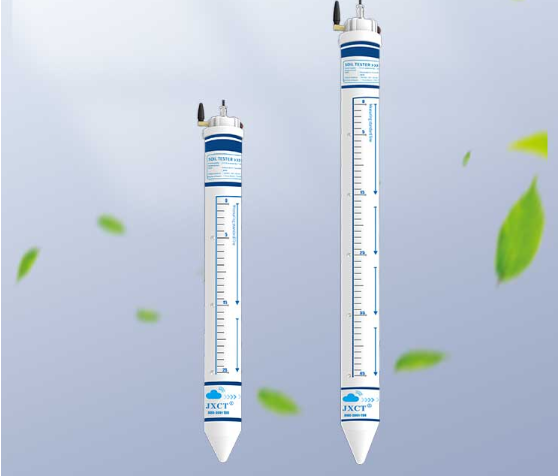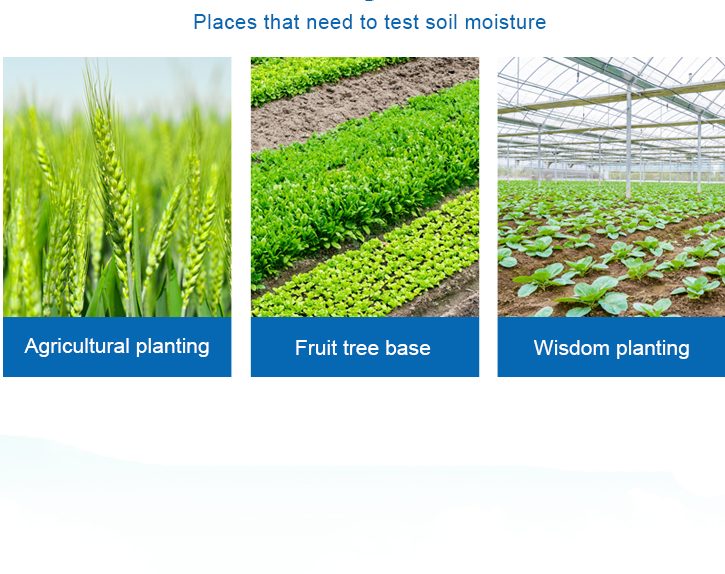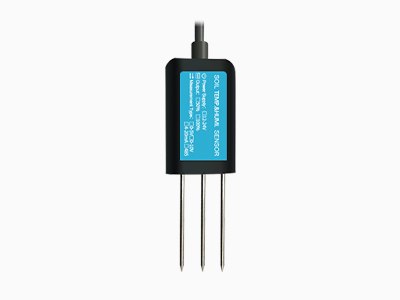Soil moisture is a key factor in agricultural productivity, affecting crop growth, water use and soil health. Soil moisture meters play a key role in managing soil moisture levels. Enable farmers to make informed decisions about irrigation and resource allocation. This paper will discuss the significance of soil moisture meter, its application in sustainable agriculture, and the future of soil moisture monitoring technology.
Significance of Soil Moisture sensor

A soil moisture meter is a tool for assessing soil moisture content, providing essential data for irrigation management and optimizing crop production. By accurately measuring soil moisture levels, farmers can determine when and how much to irrigate, effectively saving water. Additionally, soil moisture meters help prevent overwatering or underwatering, which can lead to crop stress, reduced yields, and soil degradation. Furthermore, these devices aid in the monitoring of soil health, as excessive or insufficient moisture levels can impact soil structure, nutrient availability, and microbial activity. Thus, soil moisture sensor are indispensable tools for sustainable agricultural practices and resource management.
Applications of Soil Moisture Meter

Soil moisture meters find diverse applications across various agricultural settings, including field crops, orchards, vineyards, and greenhouse operations. In field crops, these devices enable farmers to monitor soil moisture levels across large areas, guiding irrigation scheduling and improving water use efficiency. In orchards and vineyards, soil moisture meters assist in optimizing irrigation to meet the specific water needs of fruit trees and grapevines, enhancing fruit quality and yield. In greenhouse operations, these devices facilitate precise control of soil moisture for container-grown plants, promoting optimal growth conditions. Furthermore, soil moisture meter are utilized in research and experimentation to study the impact of soil moisture on plant physiology and ecosystem dynamics. Overall, the applications of soil moisture meters contribute to sustainable agricultural practices, water conservation, and improved crop productivity.
Challenges in Soil Moisture Monitoring
While soil hygrometers provide soil moisture dynamics, they maximize effectiveness. One of the main challenges is the spatial variability of soil moisture within fields, which requires the strategic use of sensors. Additionally, the calibration and maintenance of soil moisture meters are crucial to ensure accurate and reliable measurements. In addition, soil moisture data and irrigation management practices require expertise, which is a challenge for farmers. The cost of a soil hygrometer can be a barrier, hence the need for cheap and easily accessible solutions. Addressing these challenges is essential to promote widespread adoption and effective utilization of soil moisture monitoring technologies.
Future of Soil Moisture Monitoring Technologies
The future of soil moisture monitoring technologies is characterized by innovation, integration of digital solutions, and enhanced accessibility. Advances in wireless sensor networks and IoT technology have facilitated the development of soil moisture monitoring systems. These systems offer real-time data collection, remote monitoring capabilities, and automated decision support for irrigation management. With mobile apps and cloud platforms, farmers can view soil data from anywhere, facilitating informed decision making. In addition, soil moisture monitoring technology is integrated with precision farming practices to reduce input costs and improve environmental sustainability. As technologies continue to evolve, they play a key role in promoting sustainable agriculture.
Conclusion
In conclusion, soil moisture meter are indispensable tools for monitoring and managing soil moisture levels in agriculture. These devices contribute to water conservation, crop productivity, and soil health, supporting sustainable agricultural practices. While there are challenges in the utilization of soil moisture monitoring technology, continued innovation and digital solutions offer opportunities for the future. We must invest in soil moisture monitoring technology to improve resource utilization and agricultural sustainability.
